Botanical name : Cucurbita spp.
Common name : Zucchini, Courgette, Pumpkin, Summer squash and some Gourds
Easy if isolation distance can be achieved, intermediate if hand pollinating.
Lifecycle: Annual
Pollination: Insect pollinated
Mating system: Monoecious. Separate flowers produce and accept pollen. Both types of flowers occur on the one plant.
Suggested spacing: Same as for eating production.
Seed specific requirements: Fruit must be left until fully mature
Isolation distance: 250 m from other varieties of the same species
Population size: 5 to 10 plants
Seed maturity: Seed is mature when the fruit has fully matured and skin is hard
Processing method: Wash flesh off seeds after removing from the fruit
Expected seed viability: 3 to 10
Overview
Pumpkins and zucchinis can cause some confusion for seed savers as the common names may refer to varieties from four different species. Members of the same species will cross pollinate freely but cross pollination between the species is uncommon. The four species that can cause confusion are Cucurbita pepo, Cucurbita maxima, Cucurbita moschata and Cucurbita argyrosperma (syn. C. mixta). The last is less commonly cultivated in Australia but there are a few varieties available.
Each species has many growth forms and varieties but have common characteristics such as seed colour and shape, and the shape and form of the fruit stems.
Generally cross-pollination between the five cultivated Cucurbita species does not occur. However care should be taken if growing C. argyrosperma and C. moschata together as there are some reports of these types crossing.
Cucurbita pepo
This species includes:
- summer squash: crookneck, scallop, zucchini
- pumpkins: acorn pumpkins, spaghetti squash, hullless seed pumpkins
- marrow
- some decorative gourds
This species can be distinguished by it’s hard, furrowed stem with five distinct angles. It’s leaves are harsh textured, unlike the soft texture of the other species. Seeds are cream coloured with a white margin.
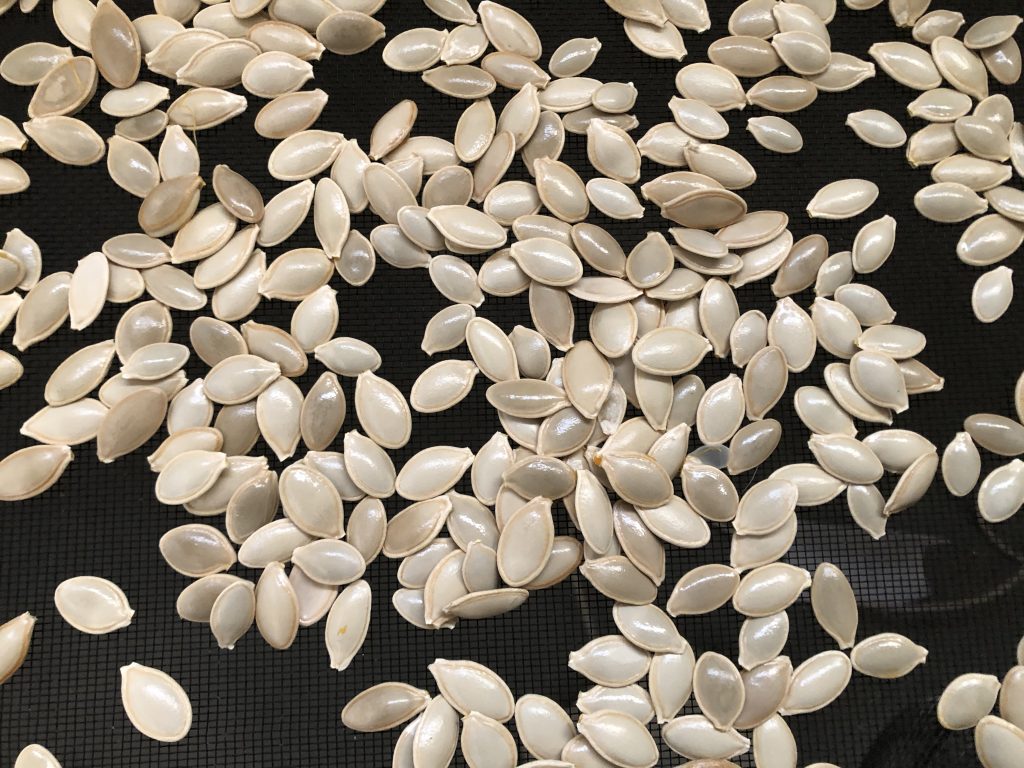
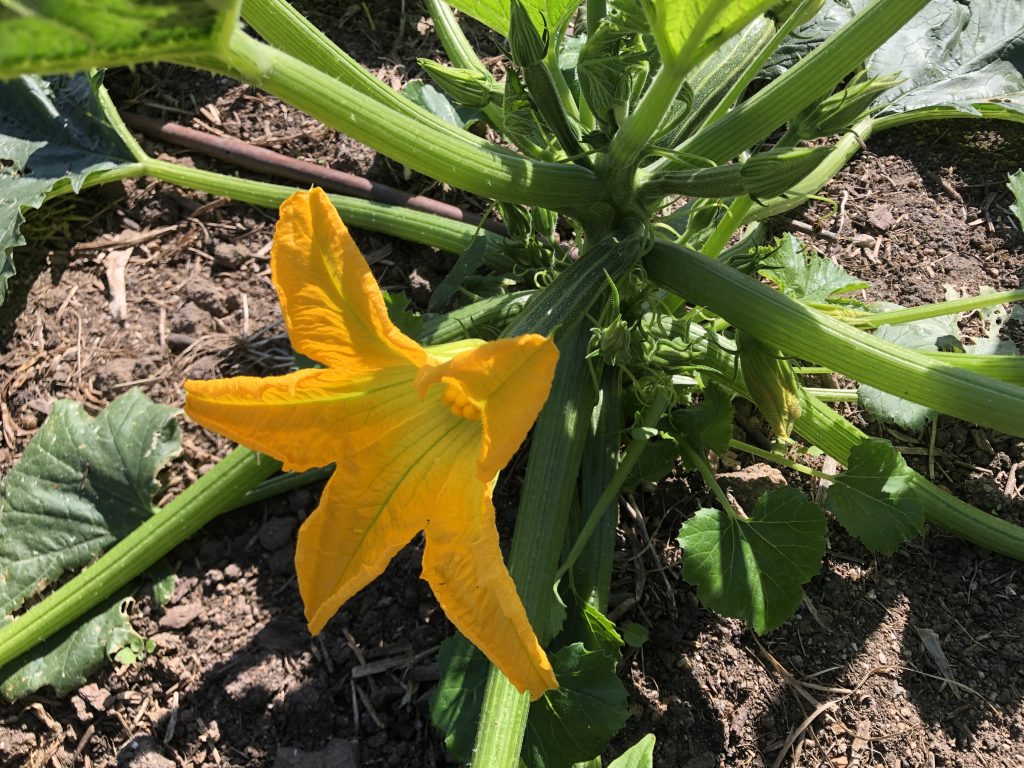
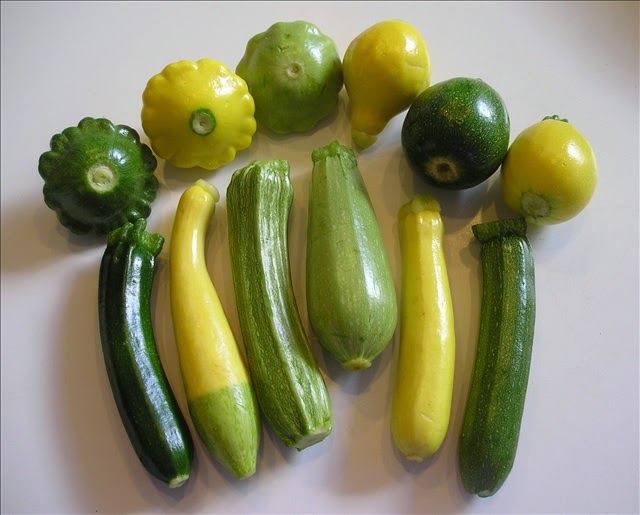
Cucurbita moschata
This species includes:
- summer squash: Tromboncino, Zucchini Rampicante
- pumpkins: Kent, Butternut
- gramma types
This species can be distinguished by it’s hard, hairy and slightly angular stem that flares noticeably at the fruit end. Seeds are small, beige and have a darker beige margin.
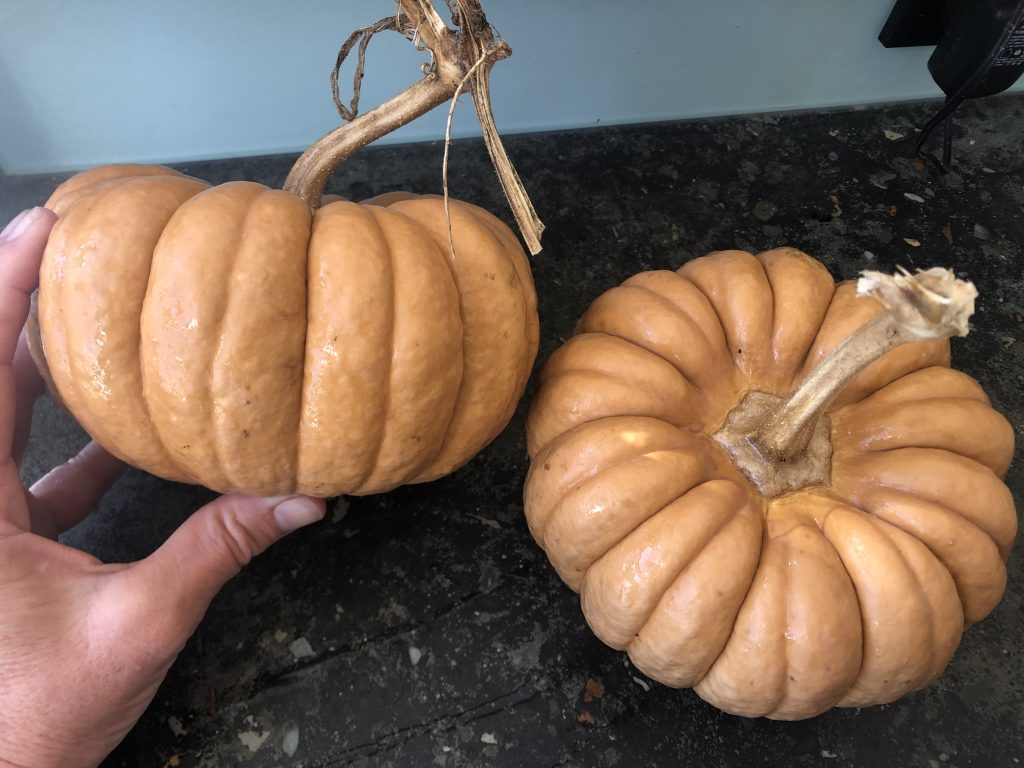
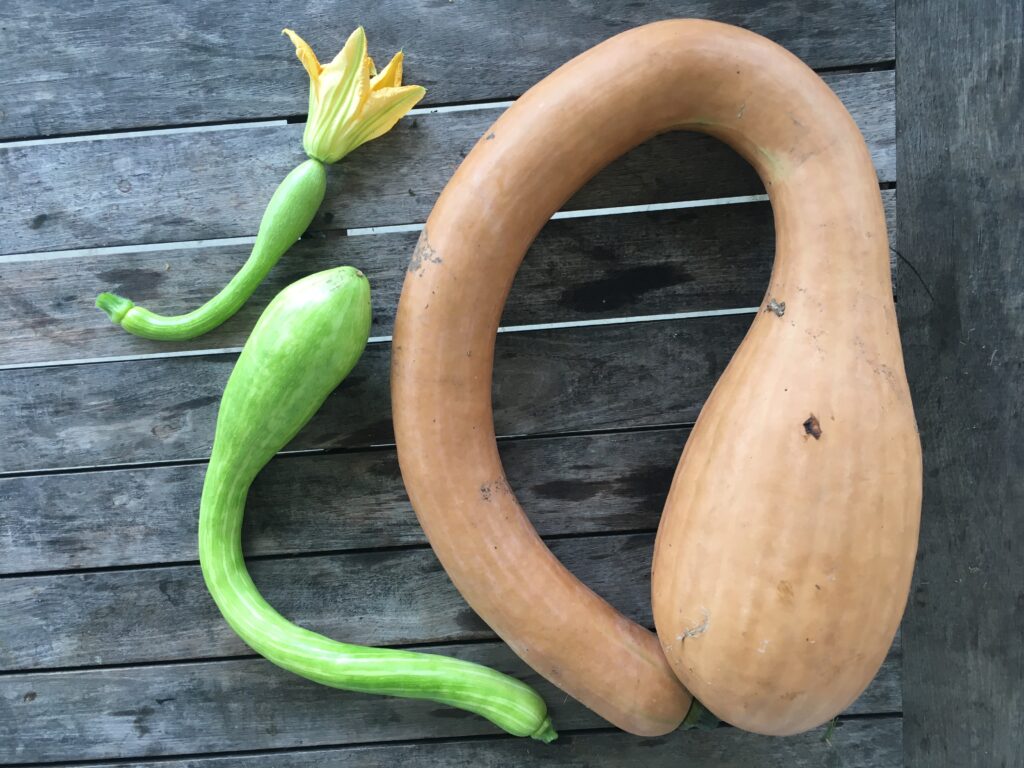
Cucurbita maxima
This species includes:
- pumpkins: QLD Blue, Jarradale, Buttercup
- hubbard varieties
This species has a distinctive soft, round & corky stem. The seeds are thick with cream coloured margins and a thin cellophane coating.
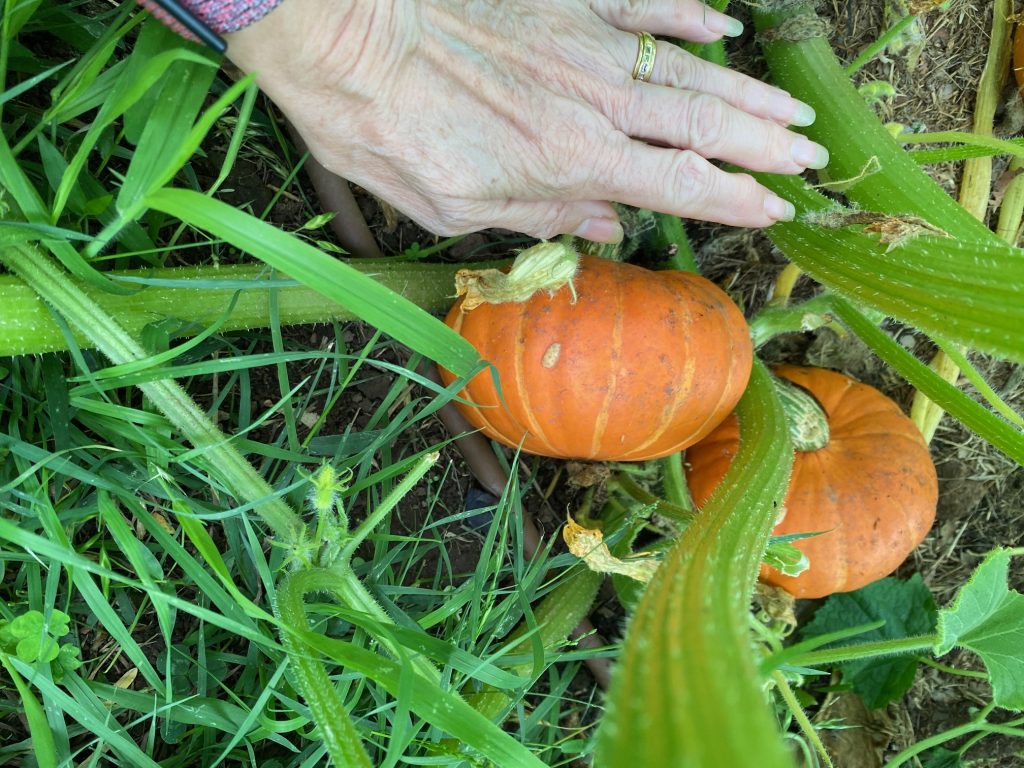
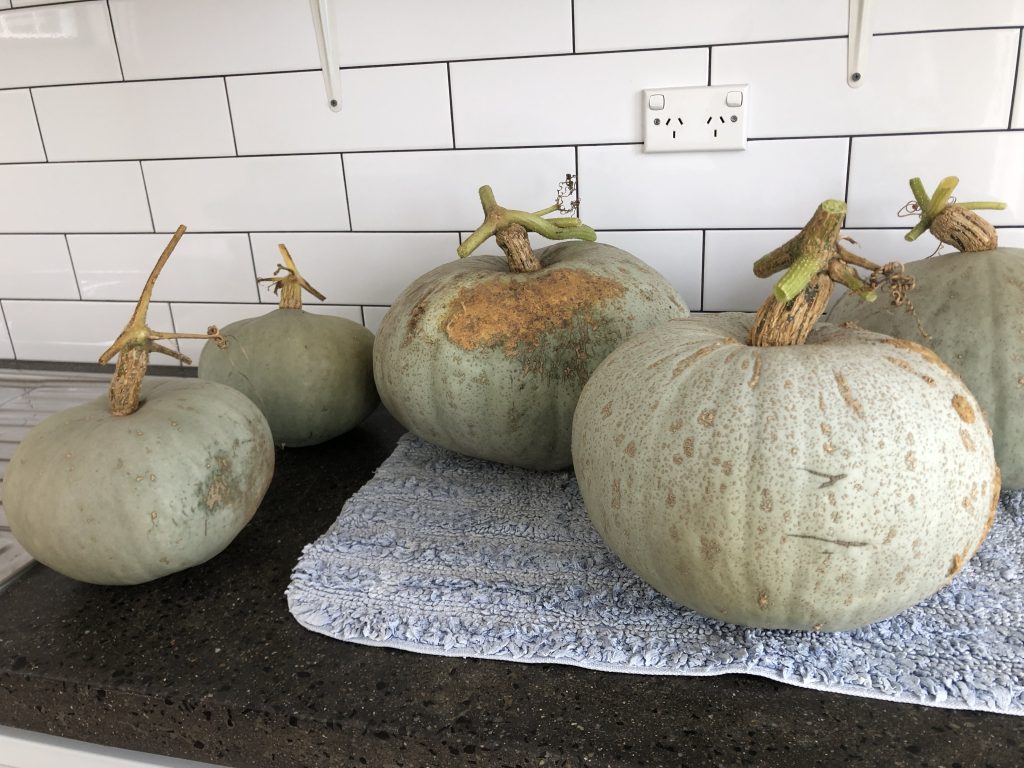
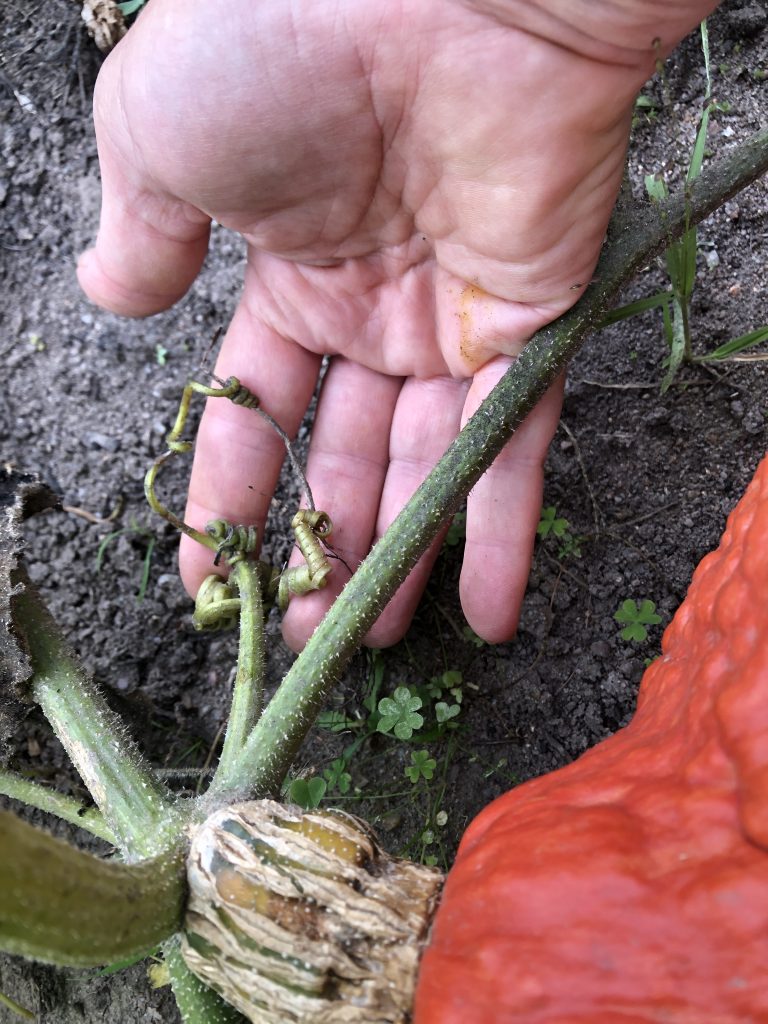
Cucurbita argyrosperma (syn. C. mixta)
This species includes those pumpkins idenfied as cushaws. Some of this species are also hullless types.
The stem of this species is hard, hairy, is five angled and flares out slightly at the fruit end. Seed is white or tan with a pale margin and cracks in the seed coat on the flat sides of the seeds. Seeds also have a thin cellophane coating.
Cucurbita ficifolia
This species is commonly referred to as the Figleaf Gourd or Chilacayote. It forms very large sprawling vines and has fruit that look like classic oval watermelons, but are usually only a couple of kilograms each. The seeds are a distinctive black and easily distinguished from other Cucurbita species.
Growing for seed
Members of the Cucurbita species only cross-pollinate within the species. Keep separated from other varieties of the same species by at least 250 metres. Alternatively use hand pollination techniques for keeping varieties true-to-type.
Be particularly careful to identify the species of all the Cucurbita you wish to grow in the same area as common names are not a good indicator. See above for distinguishing characteristics.
Selection
Any plants that are particularly pest or disease prone early in the season can be removed the gene pool. Also any plants which form young fruit that are obviously the wrong shape or colour should be removed. Leaving one or two fruits to fully mature while eating other fruits while young will allow growers to review flavour and other eating characteristics, while also allowing the plant to put energy into maturing some fruit fully.
Harvest
Fruit for seed production are harvested at full maturity. Zucchini and summer squash must be left to fully mature beyond the eating stage. Pumpkins are harvested at the same point as for eating.
Full maturity can be determined by checking that a fingernail can not be pushed into the skin.
After harvesting the zucchini/pumpkins will continue to ripen the seed inside the fruit. Storing the mature fruit for a month to 6 weeks will allow this process to complete and produce the strongest seed.
Processing
Seeds are easily scraped out of the cavity of the fruit when it is cut open. Wash off as much flesh as possible before spreading the seed out to dry.
Storage
When touch dry the seed can be stored in a paper bag or left spread out to continue drying. It will take weeks for the seed to dry sufficiently to put in an airtight container. Stored seeds going mouldy is a common problem that is easily avoided by making absolutely sure the seed is dry all the way through before storage.
Contributors
Liz Worth, Julie Davies, Lloyd Sharp, Nellie Pryke
